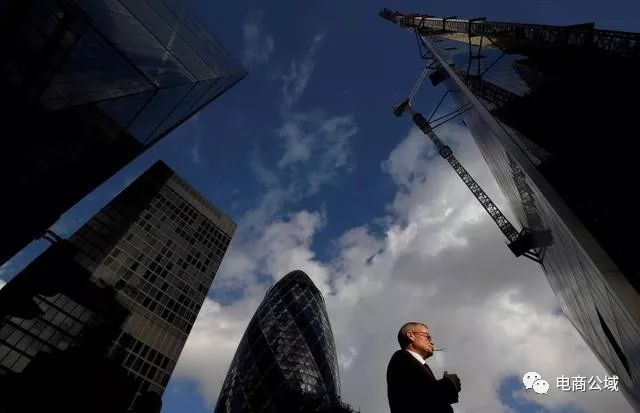哈佛大學經濟學教授Robert J. Barro近日發文稱,自從聯邦基金利率在20世紀80年代初達到22%的峰值以來,美國的通貨膨脹率一直保持在較低且穩定的水平,這使得許多人相信,僅僅是再次加息的威脅就能控制通貨膨脹。但沒有人真正知道為什么通脹會被抑制這么久。

哈佛大學教授:貨幣政策之謎
圖片 | 視覺中國
戰后經濟史的一個顯著特征是,自20世紀80年代中期以來,美國和許多其他國家遏制了通貨膨脹。在此之前,美國的通脹率(基于個人消費支出的平減指數)在20世紀70年代平均為每年6.6%,在1979年至1980年超過了10%。
One of the remarkable features of post-war economic history has been the taming of inflation in the United States and many other countries since the mid-1980s. Before then, the US inflation rate (based on the deflator for personal consumption expenditures) averaged 6.6% per year during the 1970s, and exceeded 10% in 1979-1980.
20世紀70年代初期和中期,美國總統理查德?尼克松(Richard Nixon)和杰拉爾德?福特(Gerald Ford)試圖通過對價格控制和告誡的錯誤結合,以及適度的貨幣緊縮來遏制通脹。但隨后,美國總統吉米?卡特(Jimmy Carter)在最初維持這種做法后,任命保羅?沃爾克(Paul Volcker)為美聯儲主席。在沃爾克的領導下,美聯儲很快開始將短期名義利率提高到任何可能降低通脹的水平。
In the early- and mid-1970s, Presidents Richard Nixon and Gerald Ford tried to curb inflation with a misguided combination of price controls and exhortation, along with moderate monetary restraint. But then came President Jimmy Carter, who, after initially maintaining this approach, appointed Paul Volcker to chair the US Federal Reserve in August 1979. Under Volcker, the Fed soon began to raise short-term nominal interest rates to whatever level it would take to bring down inflation.
1981年1月之后,在羅納德·里根(Ronald Reagan)總統的支持下,沃爾克不顧強烈的政治反對,堅持了這一做法。同年7月,聯邦基金利率達到22%的峰值。這項政策奏效了:從1983年到1989年,年通貨膨脹率急劇下降到3.4%的平均水平。美聯儲以極端的形式滿足了后來被稱為泰勒原則(或者更恰當地說,沃爾克原則)的要求,即聯邦基金利率的增幅大于通脹率的增幅。
Volcker, backed by President Ronald Reagan after January 1981, stuck with this approach, despite intense political opposition, and that July the federal funds rate peaked at 22%. The policy worked: annual inflation fell sharply to an average of just 3.4% from 1983 to 1989. The Fed had satisfied in extreme form what later became known as the Taylor Principle (or, more appropriately, the Volcker Principle), whereby the federal funds rate increases by more than the rise in the inflation rate.
從那時起,美聯儲主要通過控制短期名義利率,尤其是聯邦基金利率,來引導貨幣政策。2008年金融危機后,由于聯邦基金利率接近零的下限,美聯儲對短期借貸成本的控制能力受到損害,于是,美聯儲采取了前瞻性指引和量化寬松政策(QE)補充了其主要政策工具。
Since then, the Fed has guided monetary policy primarily through control over short-term nominal interest rates, especially the federal funds rate. When its power over short-term borrowing costs was compromised following the 2008 financial crisis – because the federal funds rate approached its zero lower bound – the Fed supplemented its main policy instrument with forward guidance and quantitative easing (QE).
從美國過去幾十年的通脹率來看,美聯儲的貨幣政策成效顯著。自2010年以來,年均通脹率僅為1.5%,略低于美聯儲常說的2%的目標,而且一直非常穩定。然而,問題是這是如何實現的。通脹率之所以保持在較低水平,是因為所有人都認為,只要通脹率顯著高于1.5-2%的區間,就會引發聯邦基金利率的大幅上升嗎?
Judging by the US inflation rate over past decades, the Fed’s monetary policy has worked brilliantly. Annual inflation has averaged only 1.5% per year since 2010, slightly below the Fed’s oft-expressed target of 2%, and has been strikingly stable. And yet, the question is how this was achieved. Did inflation remain subdued because everyone believed that anything significantly above the 1.5-2% range would trigger a sharp hike in the federal funds rate?
有大量的研究是關于聯邦基金利率的變化如何影響經濟的。例如,中村惠美(Emi Nakamura)和喬恩?斯坦森(Jon Steinsson) 2018年在《經濟學季刊》(Quarterly Journal of Economics)上發表的一篇論文表示,緊縮性貨幣沖擊,以及聯邦基金利率的意外上升,會在3至5年內推高美國國債收益率,其峰值效應為兩年。(擴張性沖擊的結果是對稱的。)這些影響大多適用于實際利率,并體現在指數債券和傳統國債中。收縮性沖擊對預期通脹率的影響為負,但規模適中,僅在3-5年后才開始顯著顯現。
There is a large body of research into how changes in the federal funds rate influence the economy. A 2018 paper by Emi Nakamura and Jón Steinsson in the Quarterly Journal of Economics, for example, finds that a contractionary monetary shock – an unanticipated rise in the federal funds rate – raises yields on Treasury securities over a 3-5-year horizon, with a peak effect at two years. (Results for expansionary shocks are symmetric.) Most of these effects apply to real interest rates, and show up in indexed bonds as well as conventional Treasuries. The effect of a contractionary shock on the prospective inflation rate is negative but moderate in size, and sets in significantly only after 3-5 years.
盡管聯邦基金利率的意外增長通常被貼上緊縮的標簽,但中村和斯坦森發現,在意外加息之后,“對產出增長的預測”實際上會上升。也就是說,加息預示著更高的增長,而降息則預示著更低的增長。這種情況可能會發生,因為美聯儲通常會在得知經濟比預期強勁時加息,而在懷疑經濟比此前預期疲軟時降息。
Although unexpected increases in the federal funds rate are conventionally labeled as contractionary, Nakamura and Steinsson find that “forecasts about output growth” actually rise for the year following an unexpected rate hike. That is, a rate increase predicts higher growth, and a decrease predicts lowergrowth. This pattern likely occurs because the Fed typically raises interest rates when it gets information that the economy is stronger than expected, and it cuts rates when it suspects that the economy is weaker than it previously thought.
同一篇論文還發現,出乎意料的聯邦基金利率上調對股市不利(反之亦然),這符合許多金融評論員的根深蒂固的觀點,更不用說美國總統唐納德?特朗普(Donald Trump)了。作者估計,盡管預計實際GDP增速將下降,但出人意料的降息50個基點將使標準普爾500指數上漲約5%。可能的原因是,未來3至5年,美國國債等競爭性金融工具的預期實際回報率將下降。這種貼現率效應掩蓋了預期未來實際收益下降對股價的負面影響。
The same paper also finds that an unanticipated rise in the federal funds rate is bad for the stock market (and vice versa), which accords with the deeply held views of many financial commentators, not to mention US President Donald Trump. The authors estimate that an unanticipated rate cut of 50 basis points raises the S&P 500 stock-market index by about 5%, even though projected real GDP growth declines. The likely reason is the decrease in expected real returns on competing financial instruments, such as Treasury bonds, over the next 3-5 years. This discount-rate effect overshadows the negative influence on stock prices from lower expected future real earnings.
但是,同樣令人困惑的是,美聯儲如何能夠依靠一種似乎只有微弱和滯后效應的政策工具,將通脹維持在每年1.5%的水平。據推測,如果通脹率大幅高于1.5-2%的區間,美聯儲將啟動沃爾克在上世紀80年代初實施的那種短期名義利率大幅上調,而這些變化將對通脹產生重大而迅速的負面影響。同樣,如果通脹率遠低于目標水平,甚至可能變為負值,美聯儲將大幅降息,或者,在觸及零利率下限后,使用替代的擴張性政策,這將對通脹產生重大而迅速的積極影響。
But, again, the puzzle is how the Fed can keep inflation steady at 1.5?2% per year by relying on a policy tool that seems to have only weak and delayed effects. Presumably, if inflation were to rise substantially above the 1.5-2% range, the Fed would initiate the type of dramatic increases in short-term nominal interest rates that Volcker carried out in the early 1980s, and these changes would have major and rapid negative effects on inflation. Similarly, if inflation were to fall well below target, perhaps becoming negative, the Fed would sharply cut rates – or, after hitting the zero-lower bound, use alternative expansionary policies – and this would have major and rapid positive effects on inflation.
根據這種觀點,美聯儲做出極端反應的威脅的可信性意味著,它實際上不必重復沃爾克時代的政策。自那以來,利率變動與通脹之間的關聯不大,但更劇烈變動的假設可能性仍然很大。
According to this view, the credible threat of extreme responses from the Fed has meant that it does not actually have to repeat the Volcker-era policy. Rate changes since that time have had modest associations with inflation, but the hypothetical possibility of muchsharper changes has remained powerful.
坦率地說,我對這種解釋不滿意。這就好比說,通脹率之所以被抑制,是因為它本來就是如此。毫無疑問,一個關鍵因素是實際和預期通脹率都很低,而這兩者是密切相關的。但這表明,目前處于低位且穩定的實際和預期通脹背后的貨幣政策將繼續發揮作用,直到突然失效。
Frankly, I am unhappy with this explanation. It is like saying that the inflation rate is subdued because it just is. And, no doubt, a key factor is that actual and expected inflation have both been low – the two are intimately connected twins. But this suggests that the monetary policy behind today’s low and stable actual and expected inflation will keep working until, suddenly, it doesn’t.
作者:Robert J. Barro
Robert J. Barro是哈佛大學經濟學教授,美國企業研究所訪問學者。他是《宗教財富:信仰和歸屬的政治經濟學》的合著者(與Rachel M. McCleary合著)。
Robert J. Barro is Professor of Economics at Harvard and a visiting scholar at the American Enterprise Institute. He is co-author (with Rachel M. McCleary) of The Wealth of Religions: The Political Economy of Believing and Belonging.(完)
